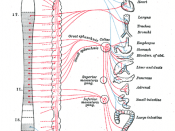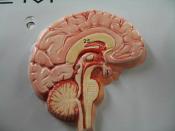In a conceptual sense, the nervous system and the endocrine system have important functional similarities. Each is basically a system for signaling. Each operates in a stimulus-response manner. Each transmits signals that in some cases are highly localized, narrow, and unitary in purpose, and in other cases are widespread, broad, and diverse in purpose. Each system is crucial to the cooperative physiological functioning of the highly differentiated cells, tissues, and organs that make up the human organism. Therefore, the nervous system and the endocrine system often respond together to incoming stimuli so as to integrate the organism's response to changes in its external and internal environment. Recent advances in immunohistochemistry, cellular physiology, and molecular biology reveal increasingly intimate relationships between neural function and hormone secretion. The very distinction between a hormone and a neurotransmitter has become blurred. It may not be fanciful either to think of a circulating hormone as a signal molecule freed from the confines of a single axon to reach all responsive cells, or to think of a neurotransmitter as a signal molecule captured from the circulation to provide a restricted chemical connection between two specific cells separated in space.
This close relationship between the nervous and endocrine systems is illustrated by several common characteristics:1.Neurons and endocrine cells can both secrete substances into the bloodstream.
2.Some endocrine cells and neurons generate electrical potentials and can be depolarized.
3.Peptides originally discovered as products of endocrine cells have neurotransmitter functions as well. Likewise, molecules nominally considered to be neurotransmitters can act as hormones.
4.A single cell can produce both biogenic amine neurotransmitters and peptide hormone molecules.
5.A single gene can be transcribed and translated to yield either a peptide neurotransmitter, a peptide hormone, or both.
6. Molecules, such as nerve growth factor and neurogenin,



Endocrine organs
very well written modern concept about the endocrine system. it gives you a relative idea and condense knowledge about the interaction of endocrine organs in the human body.
0 out of 0 people found this comment useful.